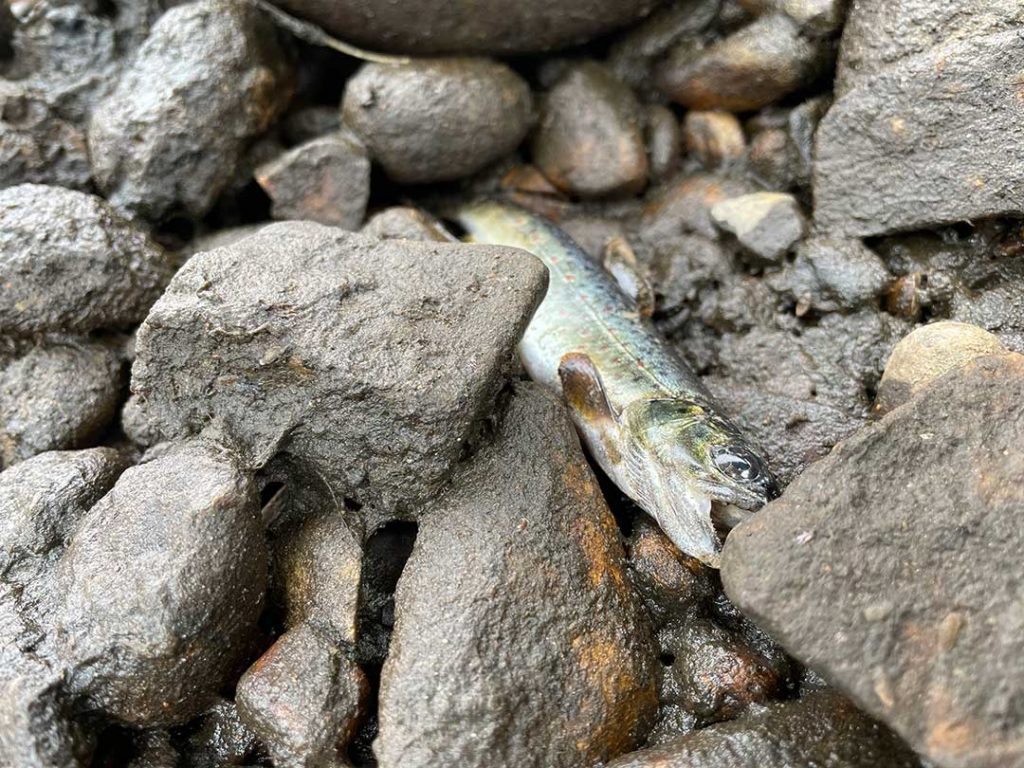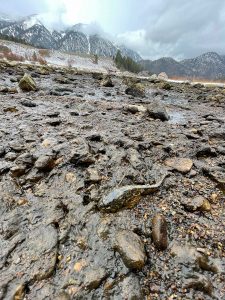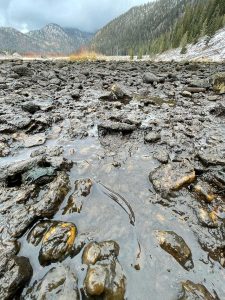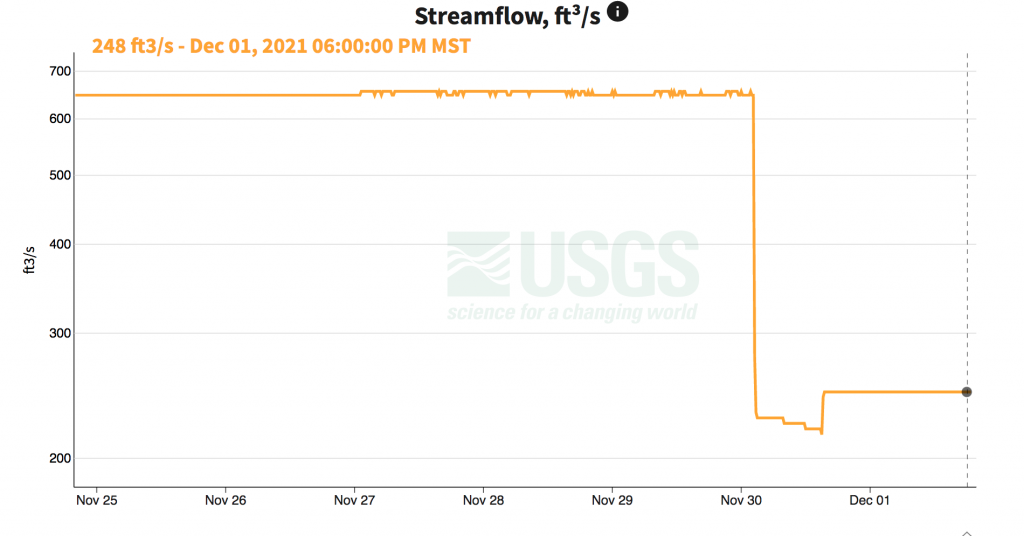
credit: Chris Bianchi, Galloup’s Slide Inn
Gate glitch kills thousands of Montana trout
By Kris Millgate/tightlinemedia.com
There’s a scramble to save fish happening in Montana. They need saving because a dam on the Madison River failed, but not the kind of the fail that causes flood. Instead of releasing all the water at once, Hebgen Dam stopped flow all at once. USGS monitoring graphs show the river dropping dramatically from 648 cubic feet per second (cfs) to 228 cfs in one hour early Tuesday morning.

credit: Chris Bianchi, Galloup’s Slide Inn
“The loss is going to be significant up high because fish didn’t have time to migrate before it fell off,” says Kelly Galloup, Galloup’s Slide Inn flyfishing lodge along the Madison in Montana. “It was instant. It didn’t taper.”
Community response was nearly as instant. Staff from NorthWestern Energy and Montana Fish, Wildlife and Parks plus guides, anglers and residents converged with buckets and nets to salvage what was still alive and move it to the main channel Wednesday.
“There’s people disbursed throughout just walking, looking for stranded fish,” Galloup says. “You find a puddle two feet across and it has 10 little fish in it, but the main channel is still flowing. That’s our saving grace.”

credit: Chris Bianchi, Galloup’s Slide Inn
Of particular concern are brown trout in the well-known, blue ribbon fishery near Yellowstone National Park. Their recently created spawning beds are common in side channels. Dewatered, the eggs are exposed.
“We see all those dead baby fish, it’s not good,” Galloup says. “It’s not like a poisoning where we would lose
it all, but we could lose a whole class of fish in those eggs.”
NorthWestern Energy owns Hebgen Dam, which was built in 1914. The power company has crews working on the gate involved with this week’s dam failure, but states in its social media updates that it will take several days to fully restore flows.
Montana FWP has an emergency closure in place for the area. No fishing allowed.
- As of now, AT has heard that the dam is back in operation. We will continue to report on what the full scale of the damage to the fishery was (and hopefully the recovery!) in the coming weeks.




1 Comment
As Kirk noted in his post on dams about the surprise of having a trout fishery in Texas, we have one in South Carolina that most would not expect to be there. Like the Texas fishery, the lower Saluda River below Lake Murray near Columbia, SC is a tailrace fishery that converted a warmwater piedmont river into a coldwater fishery in 1930.
Water temperatures run in the mid fifites F and are excellent for trout; but, problems with low dissolved oxygen and adequate flows took years of advocacy to address to improve it beyond a stocked trout water with fish that died off each fall when oxygen levels plummeted. For the past 15 years, the flows have been increased by the utility company that operates the hydro electric plant at Lake Murray from a 180 cfs to a 700 cfs minimum, and air vents raise the oxygen levels from the catatrophic less than 1 mg/l levels. State standards are usually met by the air vents at low flows, and the duration of high flows when the vents don’t maintain the oxygen well is minimized – as long as not in an emergency situation (as in September, 2020 when oxygen plummeted to zero for a few days…another story).
Trout have been able to hold over since the changes, not die off every fall, and grow to large sizes, with many over 20″. Rainbow trout have even found the Jan-Feb water temperatures right for successful reproduction. Brown trout however are not spawning in their Nov-Dec time frame when the temperatures seldom drop below 50 degrees F; but, have provided the record catches to date. More on the successful year round trout fishery can be found in the SC WILDLIFE magazine on the SC DNR website.
The point of this post is to note as Kirk did that some dams degrade or destroy native trout and salmon fisheries, but others, create new coldwater fisheries for wild trout populations to thrive in. The key is MANAGEMENT… As happened on the Madison, fisheries can be severely degraded or lost – just as happened on the Saluda in SC in 2020. This is where Trout UNLIMITED comes in! Continued advocacy with networking with other conservation groups that work for clean waters, and with the federal and state agencies and private companies that manage the dam operations is crucial. We dealt with that need during the FERC relicensing for the hydro on the Saluda in the mid 2000s, resulting in the improved oxygen and air vents, with more efficient turbine baffles to replace them from the utility company in the future. Others around the country have done the same with other agencies, like TVA, BLM, and Corps of Engineers. There are tedious and difficult aspects to doing that, especially as it sometimes take decades for meaningful changes to nurture wild trout. It’s up to Trout Unlimited on a national level to keep the spotlight on tailrace trout management and up to state councils and local chapters to make tailrace management a key and ongoing issue. Yes, the key is PERSEVERANCE!